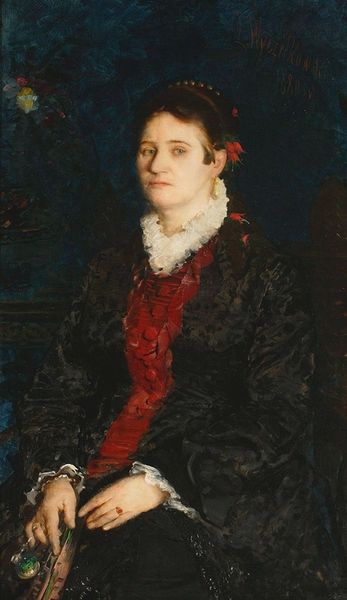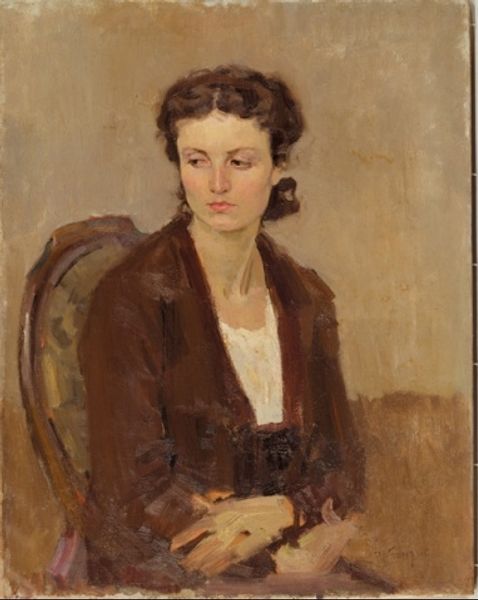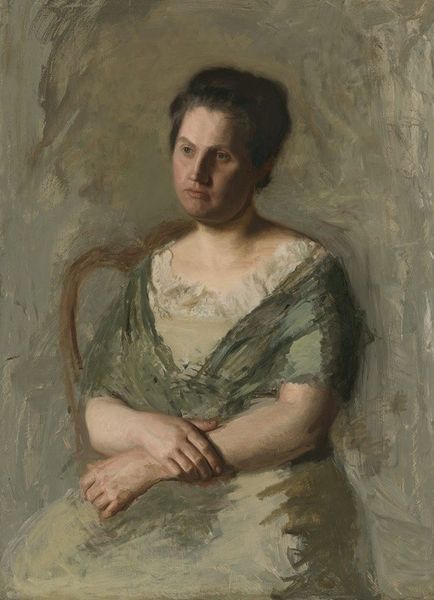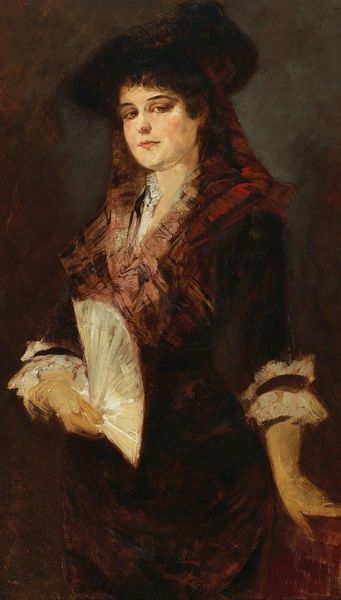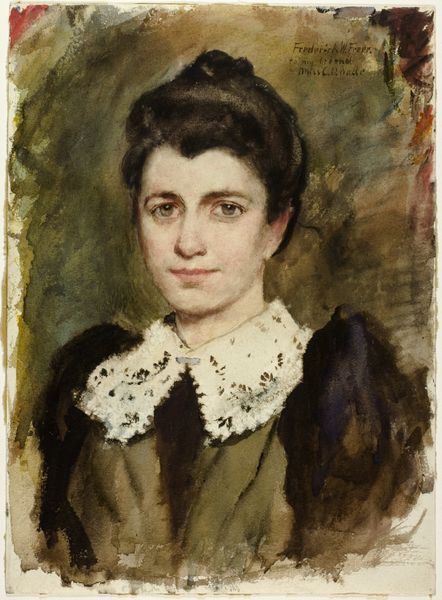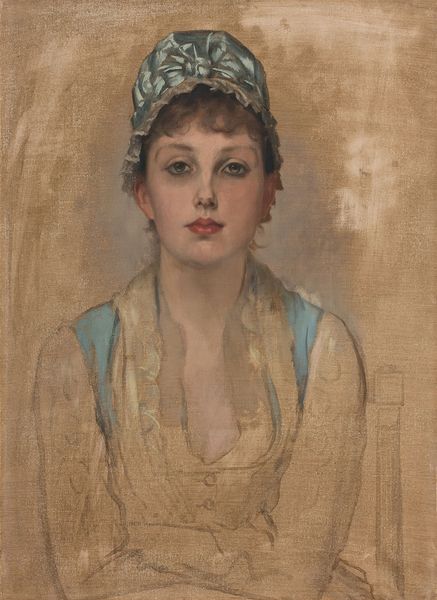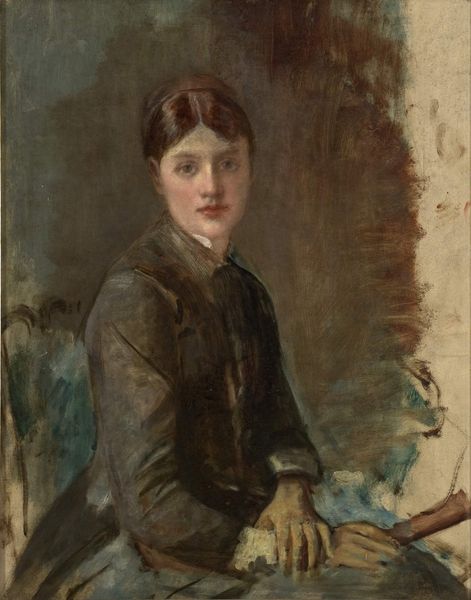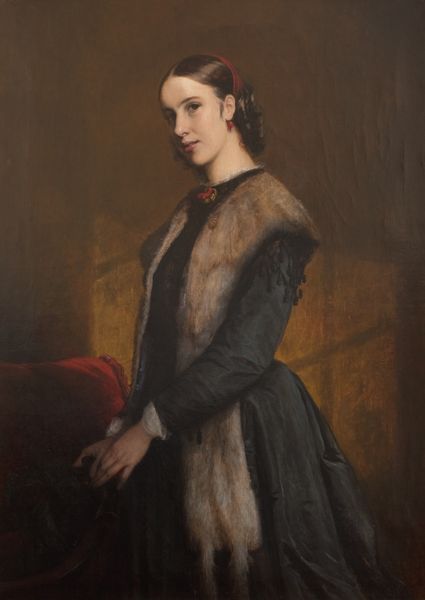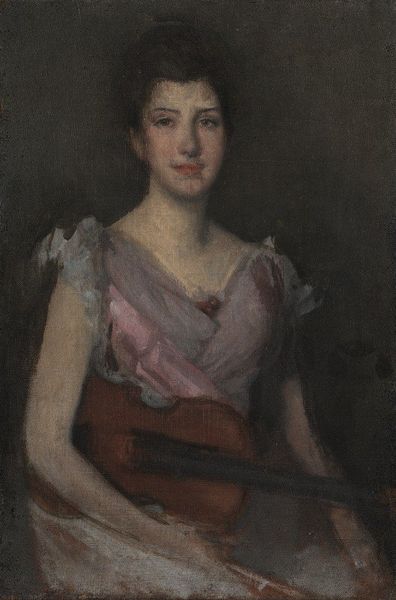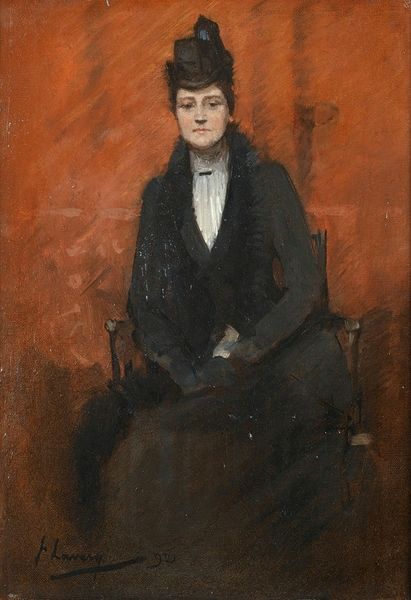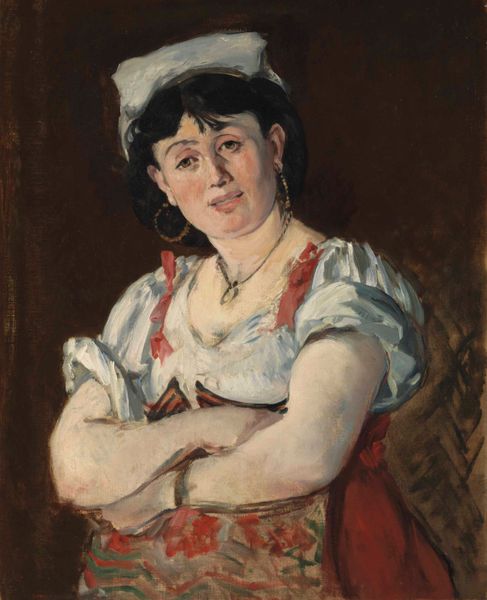
oil-paint, impasto
#
portrait
#
oil-paint
#
oil painting
#
impasto
#
academic-art
#
realism
Dimensions: 54.5 cm (height) x 44.5 cm (width) (Netto)
Editor: This is a portrait of Agnete Skovgaard, painted in 1887 by her husband, Joakim Skovgaard, using oil paint. I'm struck by the intimacy of it; she looks very calm and contemplative. How do you interpret this work, especially considering the personal relationship between the artist and the subject? Curator: The personal connection is crucial. Considering that Skovgaard was painting his wife, Agnete, this portrait offers a window into the dynamics of marriage and artistic representation in the late 19th century. The softness of the brushstrokes and the gentle lighting create an intimate and perhaps idealized image of domesticity. How does the almost academic rendering align with broader social expectations of women during that era? Editor: I see your point. The composition and her serene expression definitely fit within those expectations. Does the use of impasto disrupt this tranquility in any way, perhaps injecting emotion into the painting? Curator: Precisely! The impasto technique – the visible brushstrokes – adds a layer of complexity. It signifies a departure from strict academic realism, allowing Skovgaard to subtly convey the textures and depth of Agnete’s presence. Perhaps it hints at the complexities beneath the surface of bourgeois life and raises questions about the agency of the sitter. To what extent is Agnete complicit or defiant in her own representation? Editor: That makes me think about the color choices, too. The muted tones feel very deliberate. I’m now curious about the intended audience and the narrative Skovgaard aimed to convey through this artwork. Curator: Exactly. The subdued palette can be read as a reflection of the social constraints placed upon women, while the impasto technique speaks to a quiet resistance, injecting subjectivity and personal expression into an otherwise conventional portrait. This contrast highlights the ongoing negotiation between personal identity and societal expectations during this period. Editor: This conversation really opened my eyes. It is interesting to see how elements can play off each other and contribute to such complexity. Curator: Yes. By engaging with the work through a gendered and social lens, we begin to unpack its intricate layers of meaning and its relevance to ongoing discussions about identity and representation.
Comments
No comments
Be the first to comment and join the conversation on the ultimate creative platform.
